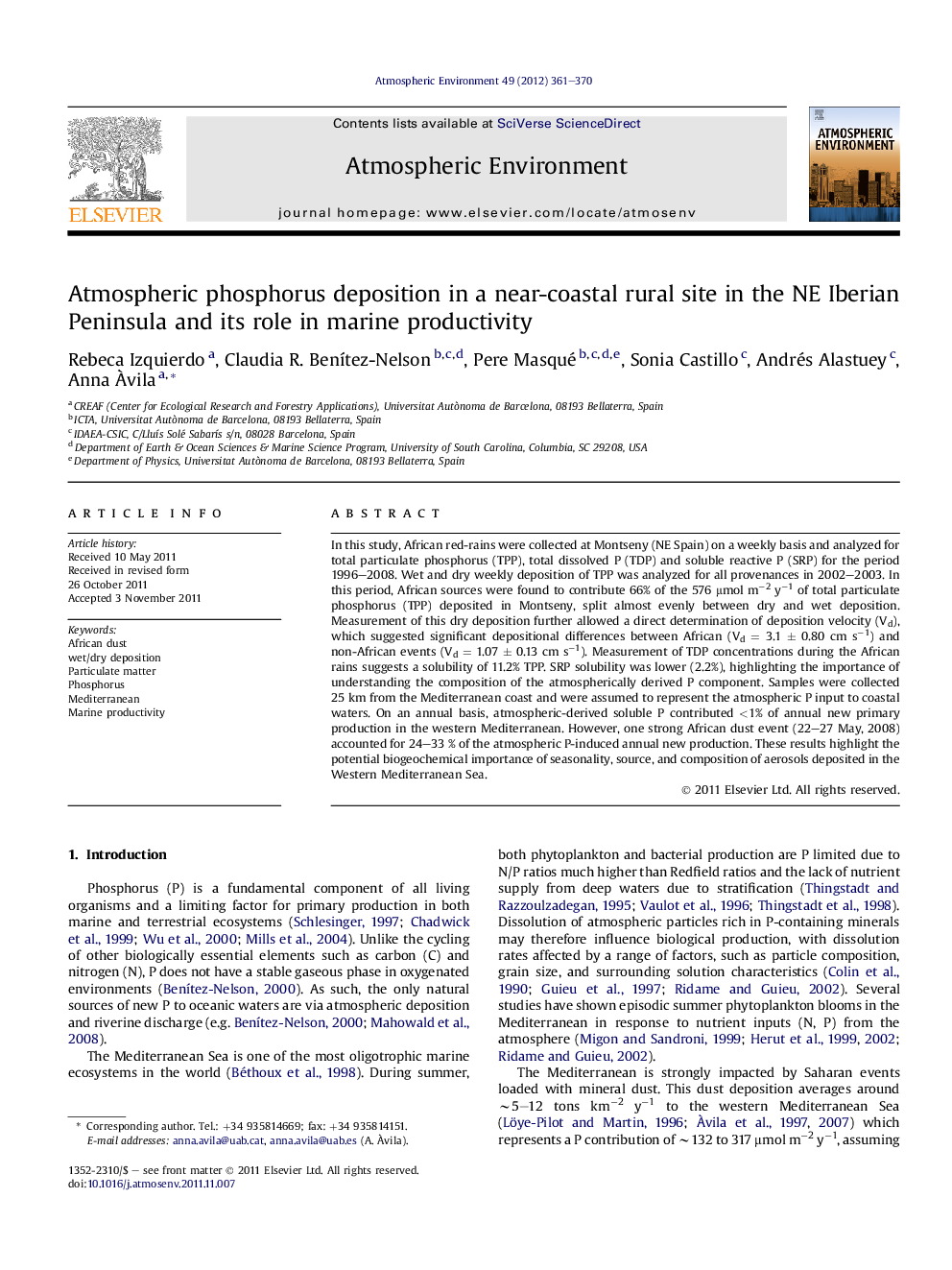| Article ID | Journal | Published Year | Pages | File Type |
|---|---|---|---|---|
| 4439095 | Atmospheric Environment | 2012 | 10 Pages |
In this study, African red-rains were collected at Montseny (NE Spain) on a weekly basis and analyzed for total particulate phosphorus (TPP), total dissolved P (TDP) and soluble reactive P (SRP) for the period 1996–2008. Wet and dry weekly deposition of TPP was analyzed for all provenances in 2002–2003. In this period, African sources were found to contribute 66% of the 576 μmol m−2 y−1 of total particulate phosphorus (TPP) deposited in Montseny, split almost evenly between dry and wet deposition. Measurement of this dry deposition further allowed a direct determination of deposition velocity (Vd), which suggested significant depositional differences between African (Vd = 3.1 ± 0.80 cm s−1) and non-African events (Vd = 1.07 ± 0.13 cm s−1). Measurement of TDP concentrations during the African rains suggests a solubility of 11.2% TPP. SRP solubility was lower (2.2%), highlighting the importance of understanding the composition of the atmospherically derived P component. Samples were collected 25 km from the Mediterranean coast and were assumed to represent the atmospheric P input to coastal waters. On an annual basis, atmospheric-derived soluble P contributed <1% of annual new primary production in the western Mediterranean. However, one strong African dust event (22–27 May, 2008) accounted for 24–33 % of the atmospheric P-induced annual new production. These results highlight the potential biogeochemical importance of seasonality, source, and composition of aerosols deposited in the Western Mediterranean Sea.
► African sources contributed 66% TPP deposition to the NW Mediterranean. ► TPP deposition was split almost evenly between wet and dry deposition modes. ► Soluble P deposition was relevant for marine productivity only in big dust events.
